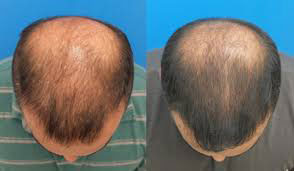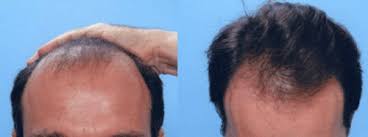Overview of Hair Restoration
Modern techniques of surgical hair transplantation can restore lost hair and replace or re-shape your hairline with your own natural, growing hair restoration, which needs no more care than the ordinary washing, styling, and trimming you have always done. Transplantation can be done today so well that often a barber or stylist cannot even tell that grafts have been placed.
Hair Restoration Treatment Options
People with thinning hair restoration now have more options available to them than ever before.
- Hair restoration surgery offers a permanent, living solution to lost scalp hair.
- Effective medical treatments are now offered in the form of a pill (finasteride) and a topical liquid (minoxidil). They require life-long treatment (hair restoration) to maintain their effect.
- Cosmetic enhancers include colored creams, sprays, and powders that, when applied to the thinning scalp, help to camouflage thinning areas, as long as there is still some hair present in the area. They do not treat the hair loss process.
- Hairpieces are a non-surgical means to hair restoration by covering bald areas of the scalp. There is a large variety of means for attaching these. The most common are glue adhesives, “weave” attachment, and clips.
.
Why the ‘Aesthetic Hair Implants’ Hair Restoration Technique?
With this technique, we can place up to 3000 to 5000 hairs in one procedure depending on the donor area.
The extraction method is hugely advanced over other extraction methods. We use a patented mechanized extractor with a tiny punch of 0.5-0.8 mm diameter. It is highly efficient and precise, as it speeds up extraction with higher number of hair restoration extracted in a short time and prevents graft loss respectively. The healing of the donor area is quick and extraction marks are close to invisible. The unique extraction technique often leaves part of the follicle / sebaceous gland in the donor site following extraction which can create growth of 2 hairs from the one original follicle (hair restoration). Older techniques use manual punches of 1 – 1.5 mm diameter, which creates large circular scars in donor site that can look ugly with short hair-cuts.
The AHI technique uses a patented implanter pen that allows implantation of far higher grafts/hairs per sq. cm. than any other method. Finest implanters are used to make an opening on the site. The size of these implanters allows for 60-70 hairs per sq. cm. whereas other methods can place up to only 45 hairs per sq. cm. The per sq. cm. density placement is the most vital aspect for a high-density end result (hair restoration). Many top international hair restoration clinics do not use implanters for this very reason, that the needle point on the implanter has a wide diameter and therefore limits the doctor in the level of density/number of grafts that can be placed. The survival rate with this method is also far higher than those with the implanter for various reasons.
So When Can I See Hair Restoration Results?
The hair planted starts growing after 2-3 months at a rate of ½ cm/month. The clients can see the results in 6-8 months. These transplanted/hair restoration roots behave in the same manner as the hair from the area where they are extracted. These transplanted hairs can be cut or trimmed regularly after growth. If required, these hairs can also be shampooed or dyed and don’t require any medicines to maintain the growth, as it occurs naturally and permanently. Even after complete shaving, the hair restoration will grow back and tend to do so for the rest of life.




 WhatsApp us
WhatsApp us